So you want to travel through time, but you’re worried about the consequences. Perhaps you’ve heard of time travelers erasing their family trees, or screwing up world history, or destroying the universe altogether. You’re curious about the fourth dimension, but you don’t want to be “that guy” (or “that gal”) whose obsession with meeting King Tut ruins the future for the rest of us. Well, good news: when it comes to time travel, you’ve got options.
Modern storytellers have put forth at least eight different theories of time travel, not all of which involve ripple effects. Some don’t even require a proper time machine: travelers have been known to zip through history using phone booths, hot tubs, the streets of Paris, or even their own strange genetics. But temporal excursions are nothing if not complicated… so hang on to your history books as we fire up our flux capacitors and explore the myriad ways that books, movies, and TV shows handle that most mind-bending of sci-fi subjects: time travel.
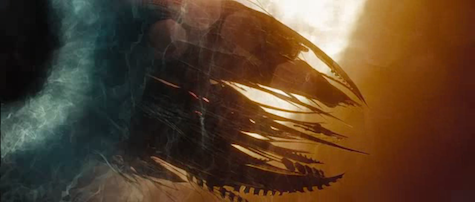
1. History Can Be Altered: Lessons from Marty McFly and JJ Abrams
The most common theory of time travel goes like this: if you change the past, those changes ripple into the future. The classic example is Back to the Future, in which Marty McFly travels to 1955 and accidentally prevents his parents from falling in love. This causes Marty to start fading out of existence, and he has to set the timeline straight before he disappears entirely. In so doing, he also manages to help his dad best the school bully, which turns out to make the future much brighter for his entire family.
This setup has been the basis of countless time travel stories, from comedies like Hot Tub Time Machine and the new British film About Time, to the TV drama Quantum Leap (in which the lead character jumps not only through time but also through souls). In each case, this form of time travel is almost always about characters changing (or not changing) the past so as to selectively change the future—the amount of “ripple” tends to vary depending on the scope of the story, but the ripples always exist.

The danger of altering history is that small changes can have big consequences. No franchise plays to this idea better than Star Trek. Five different Trek movies have featured time travel, including Star Trek IV: The Voyage Home (in which Kirk and company visit 20th century Earth to save the whales, and therefore the future), and Star Trek: First Contact (in which the Borg enslave Earth via time travel, forcing Picard and his crew to do battle in the past). But the most interesting take is the JJ Abrams Star Trek reboot, in which a wormhole causes Kirk’s father to die prematurely, thereby altering Kirk’s life and the entire Trek mythology, and allowing for a franchise reboot, since the events of the TV shows and first ten movies now never happened at all.
Of course, there’s a big problem when it comes to changing the past: what time travel Professor Emeritus Doc Brown calls a “paradox” (and which is more accurately described as The Grandfather Paradox). If you go back in time and kill your younger self, then you can never travel back in time to kill yourself, and therefore you live, thus you do travel back in time, creating an infinite logic loop that (according to the Doc) threatens to unravel the very fabric of reality. Whoa, that is heavy! Fortunately, there are much safer methods of time travel available to the discerning explorer…
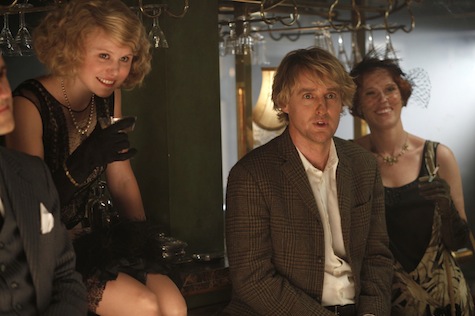
2. Time Travel Without Consequence: From Mark Twain to Woody Allen
Many fictional characters travel through time with no consequences whatsoever. One of the earliest time travel stories is Mark Twain’s A Connecticut Yankee in King Arthur’s Court, in which a man of Twain’s time travels to medieval Britain. There’s no talk of temporal side effects in this clever tale, just of the surprising challenges of finding yourself living in a bygone era. (Michael Crichton used a similar plot in his book Timeline, in which a team of New Mexico scientists travels to medieval Europe and, once again, experience no historical consequences beyond the obvious difficulties of being caught on a medieval battlefield without any broadsword training.)
Another early time travel story was H.G. Wells’ The Time Machine, in which the main character travels through time to Earth’s extremely distant future, then returns to tell his friends of the strange world he found. Once again, no ripples ensue—perhaps because the future is so distant that any logical connection is hard to conceive of—or perhaps because in 1895, even imagining a time machine as such was quite a feat of the imagination.
The Time Traveler’s Wife played with time travel in a different way entirely: the main characters in this book (and movie) have a genetic illness that causes them to jump around through time, witnessing key moments in each other’s lives and living out a romance unbound by causality. But this isn’t a story about logic or loopholes; the focus is on the emotions between two characters who form a relationship outside the bonds of linear time, filled with strange certainties that have a palpable influence on their love.
Then there’s Woody Allen’s Midnight in Paris, in which Owen Wilson takes a nightly trip to his favorite time period, the 1920s. Allen must have been tempted to have Wilson’s character mess with the timeline by, say, giving Ernest Hemingway story ideas or sleeping with Gertrude Stein—but he instead avoids all such liberties and keeps the story focused on the characters and the theme of idealizing the past. The movie is one of the more artful time travel stories ever told, and was nominated for several Academy Awards.
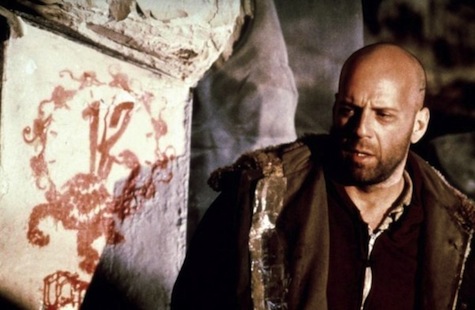
3. The Future is Written: On Monkeys and Terminators
There’s another theory of time-travel-without-consequence, and it goes like this: the future is written, and anything a time traveler does will simply cause that future to occur. This idea actually has a scientific name: it’s called the Novikov Self-Consistency Principle, which basically says that any time travel event which would cause a logical paradox has zero mathematical probability of happening. In short, the universe is internally consistent, and nothing we do (even with a time machine) can ever break it.
In the movie Twelve Monkeys, Bruce Willis travels back in time to the 1990s to locate the source of a plague that nearly wipes out humanity in the future. But it turns out that his own trip back leads to the events that let the plague loose: a classic case of self-fulfilling prophecy. The Terminator movies follow a similar logic: the Terminator is supposedly trying to kill John Connor before his rise to power, but it’s the chase itself that gives the Connors their strength—and, unfortunately, leads to the waking of Skynet and the nuclear holocaust that sets the stage for John’s adult life.
The TV show LOST used a similar technique several times during its run—for instance when Desmond’s every attempt to save Charlie’s life seemingly played into Charlie’s inevitable death. In season five, several of the main characters went back in time to join the Dharma Initiative and participated in key events in island mythology; that instance of time travel is more properly classified as a time loop (we’ll explore time loops in Part 2 of this article, but included elements of history writing itself via time travel.
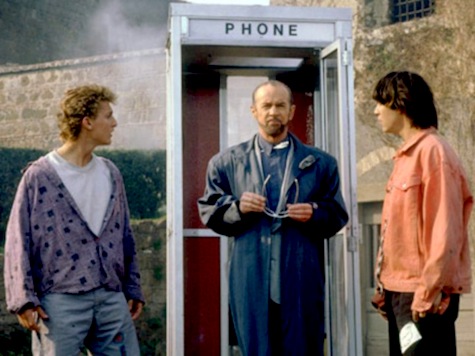
And let’s not forget Bill and Ted’s Excellent Adventure, the classic bromantic comedy in which the title characters find themselves “helped out” on several occasions by mysterious events such as a pair of metal trash cans falling out of the sky at just the right moment. Who provided the timely assistance? They did, a day later, using a time-traveling phone booth. Before the movie is done, Bill and Ted make sure to go back in time and lend themselves that helping hand: what goes around, comes around, dude.
That concludes part one of our exploration of time travel. Next week, things get a lot weirder with temporal causality loops, Einstein’s Theory of Relativity, and the great big mind-bender known as the Multiverse. So let’s time travel one week into the future and rendezvous back here at Tor.com.
Brad Kane writes for and about the entertainment industry, focusing on storytelling in movies, TV, games, and more. If you enjoyed this article, you can follow him on Twitter, like Story Worlds on Facebook, or check out his website which archives the Story Worlds series.










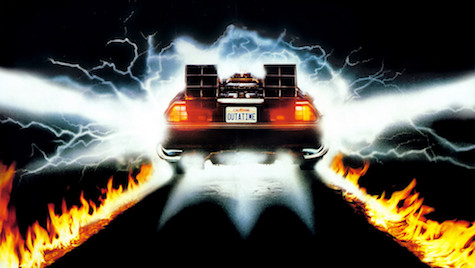
You missed a big one, and miscategorized one, in my opinion. The Star Trek reboot falls firmly into the category of Divergent Timelines.
The events of Star Trek (2009) created a divergent timeline which exists side by side with the original timeline. It doesn’t replace it. Its not as if the events never happened. They are happening parallel to each other. The reboot is effectively an alternate timeline.
And that’s how a bunch of other time travel stories are handled. From the point at which you jump back, you are creating a new timeline, not rewriting over the old one. Or, alternately, all possible timelines exist, and when you jump back, rather than traveling backward over your own history, you are actually jumping sideays onto another timeline that, prior to your jump point, was identical.
John Scalzi actually uses this multiverse theory, not for time travel, but for FTL wormhole jumps in his Old Man’s War universe, which is brilliant. Instead of traveling from point A to point B in your universe, the jump engine actually takes you from point A in your universe to point B in another universe that is almost exactly the same.
I haven’t caught any yet, but it also gives him a total out for any inconsistencies from book to book, lol.
I would assume the ‘multiverse’ mentioned above would be the parallel timelines mentioned in #1.
Although, without being able to perceive multiple timelines simultaneously, how can one differentiate between history being altered and a divergent/alternate (but parallel) timeline?
For your #1 I think you missed a big example in “A Sound of Thunder” (the 1950’s short story by Bradbury; not the horrible movie starring Ed Burns). It predates anything else you’ve cited for that example and does it more elegantly than them as well.
A Sound of Thunder is where the term Butterfly Effect got its name. Brilliant story.
Poul Anderson had a time travel novel (not associated with his Time Patrol) where a few individuals have the ability to travel backwards and forwards in time. One of them has an accident that prevents himself from going back in time to prevent his mother’s death. The group believes that they can “meddle” in the past only where they don’t know what would actually if they didn’t meddle.
Just do time travel like Doctor Who, when the rules (such as ‘fixed points in time’) flex based on the needs of the plot. Pretty much every permutation of time travel rules and effects have been covered at some point or another…
Well, it is possible to have people in the past taking active steps to ensure that the events predicted by a disoriented and indeed somewhat ill time-traveller never comes about. Two secrets are hereby revealed – just where did the Time Traveller vanish to? and who was that strange man in the iron mask?
No list of time travel stories is complete without the cinematic masterpeice known as Timecop.
There, don’t you feel smarter just having watched that scene? ;)
What a long article. I just wanna know can I time travel? If yes then How? and If no then Why?
Sound of thunder is classic.
Also the British Author John Wyndham (day of the triffids and midwish cookoos), has time travel stories with multiple universes.
It is a shame he is not better known.
Loved reading through this blog. I have one of my own that I’m trying to work on because I love the topic
https://darthtechnologies.wordpress.com/2013/12/07/time-travel-unraveled/
My favourite example of #1 is “Time and Punishment” in Treehouse of Horror VI. The delicate (and failed) attempts by Homer to avoid changing the past building to his wanton destruction of everything in it …
Anyone read Dick’s “Waterspider”? REALLY fun use of time travel.
Im interested in traveling back in time as well
Carrieb john wyndham also wrote a collection of time travel stories in seeds of time. Certainly with you in that he’s s great science fiction author
So glad to see people mentioned “A Sound of Thunder” by Ray Bradbury. One of my favorite stories to read to middle schoolers before beginning a year of history class.